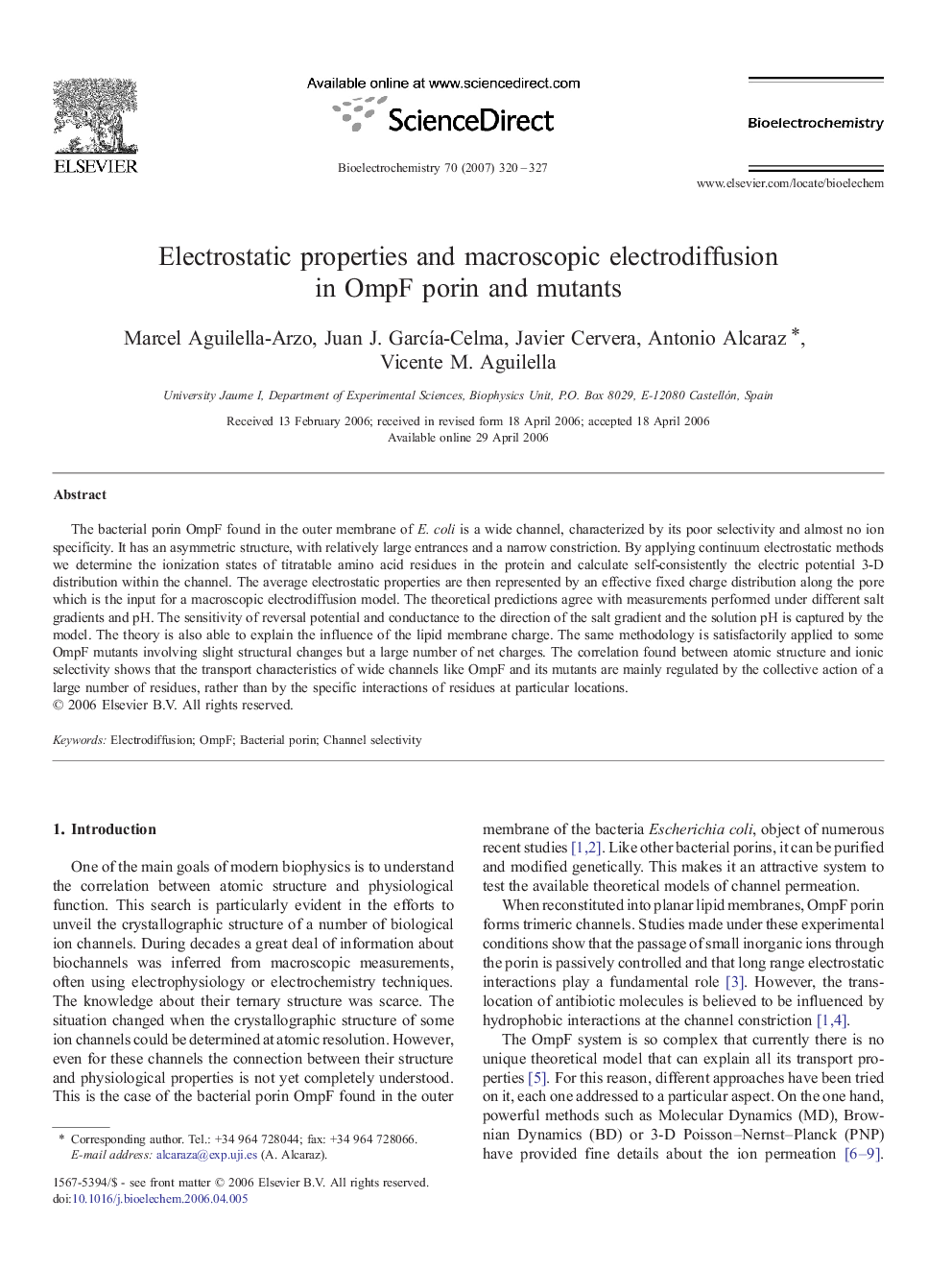| Article ID | Journal | Published Year | Pages | File Type |
|---|---|---|---|---|
| 1272489 | Bioelectrochemistry | 2007 | 8 Pages |
The bacterial porin OmpF found in the outer membrane of E. coli is a wide channel, characterized by its poor selectivity and almost no ion specificity. It has an asymmetric structure, with relatively large entrances and a narrow constriction. By applying continuum electrostatic methods we determine the ionization states of titratable amino acid residues in the protein and calculate self-consistently the electric potential 3-D distribution within the channel. The average electrostatic properties are then represented by an effective fixed charge distribution along the pore which is the input for a macroscopic electrodiffusion model. The theoretical predictions agree with measurements performed under different salt gradients and pH. The sensitivity of reversal potential and conductance to the direction of the salt gradient and the solution pH is captured by the model. The theory is also able to explain the influence of the lipid membrane charge. The same methodology is satisfactorily applied to some OmpF mutants involving slight structural changes but a large number of net charges. The correlation found between atomic structure and ionic selectivity shows that the transport characteristics of wide channels like OmpF and its mutants are mainly regulated by the collective action of a large number of residues, rather than by the specific interactions of residues at particular locations.
